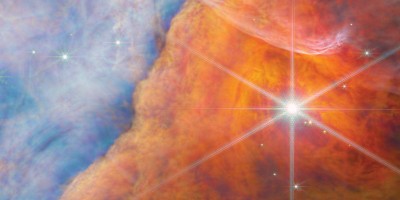The limits of our knowledge on light–matter interactions (that is, opacity models) will affect the exploration of exoplanetary atmospheres. Accounting for these limits will prevent biased claims. Guided improvements in opacity models, their standardization and dissemination will ensure maximum return on investment from the next-generation observatories, including the JWST.

References
de Wit, J. & Seager, S. Constraining exoplanet mass from transmission spectroscopy. Science 342, 1473–1477 (2013). This paper reports how constraints on atmospheric temperature, pressure and composition can be derived from a transmission spectrum, assuming an ideal opacity model.
Gordon, I. E. et al. The HITRAN2016 molecular spectroscopic database. J. Quant. Spectrosc. Radiat. Transf. 203, 3–69 (2017). This paper introduces the 2016 version of HITRAN’s molecular spectroscopic database. (Note that HITRAN2020 is now available.)
Tennyson, J. et al. The 2020 release of the ExoMol database: Molecular line lists for exoplanet and other hot atmospheres. J. Quant. Spectrosc. Radiat. Transf. 255, 107228 (2020). This paper introduces the 2020 version of ExoMol’s molecular line lists.
Batalha, N. et al. MAESTRO: A community tool for computing, visualizing, and manipulating molecular & atomic opacities. Bull. Am. Astron. Soc. https://baas.aas.org/pub/2022n5i102p371 (2022). A NASA-funded community tool being developed to improve astronomers’ use of opacity models.
de Wit, J. et al. Atmospheric reconnaissance of the habitable-zone Earth-sized planets orbiting TRAPPIST-1. Nat. Astron. 2, 214–219 (2018). This paper presents the atmospheric reconnaissance of TRAPPIST-1 d, e, f and g with the Hubble Space Telescope.
Additional information
Publisher’s note Springer Nature remains neutral with regard to jurisdictional claims in published maps and institutional affiliations.
This is a summary of: Niraula, P. et al. The impending opacity challenge in exoplanet atmospheric characterization. Nat. Astron. https://doi.org/10.1038/s41550-022-01773-1 (2022).
Rights and permissions
About this article
Cite this article
Opacity-driven bottlenecks in decoding exoplanetary spectra. Nat Astron 6, 1237–1238 (2022). https://doi.org/10.1038/s41550-022-01778-w
Published:
Issue Date:
DOI: https://doi.org/10.1038/s41550-022-01778-w
- Springer Nature Limited


